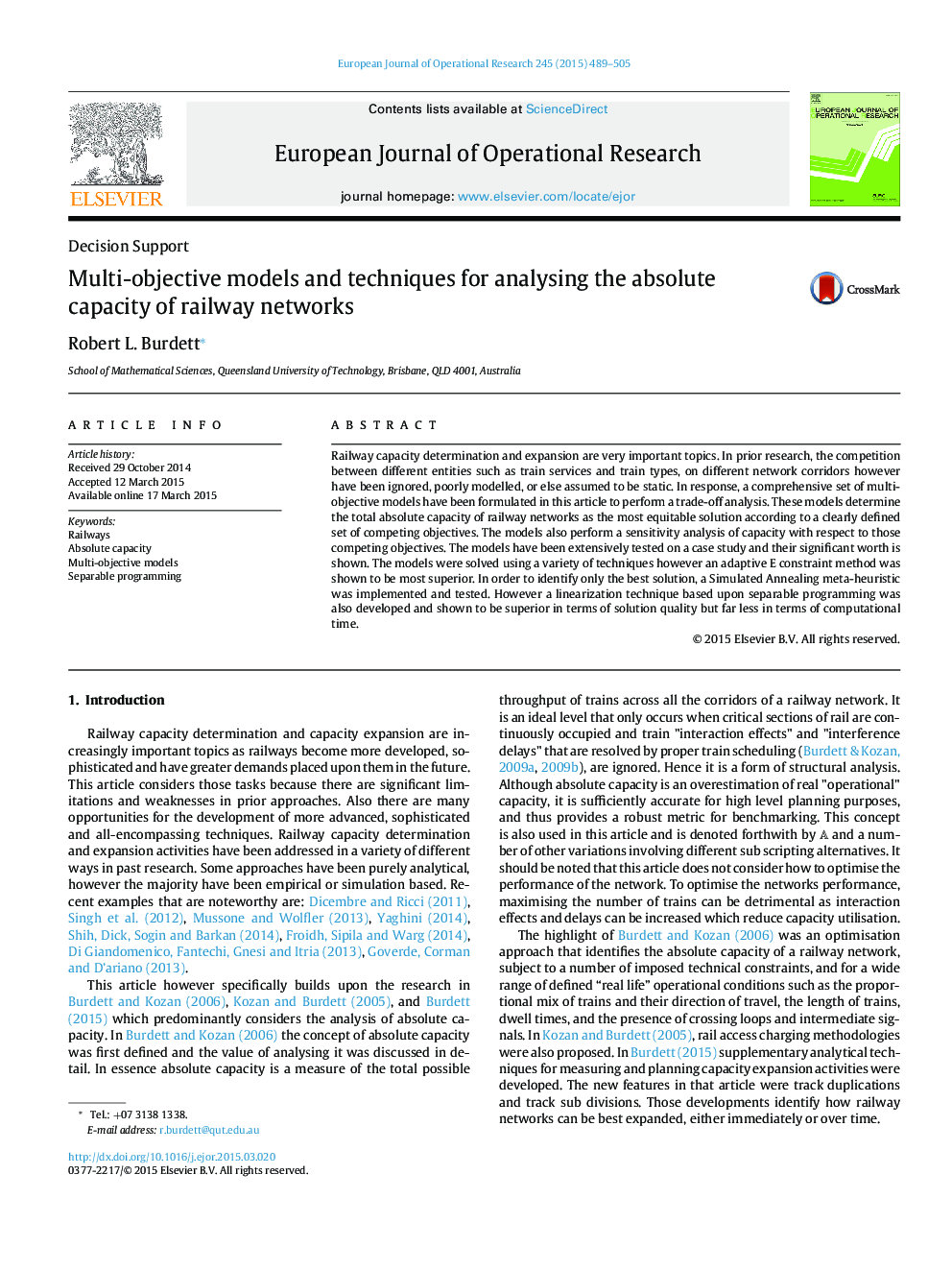| کد مقاله | کد نشریه | سال انتشار | مقاله انگلیسی | نسخه تمام متن |
|---|---|---|---|---|
| 479524 | 1446001 | 2015 | 17 صفحه PDF | دانلود رایگان |
• Multi-objective capacity models were formulated for railways.
• The new models regulate the competition between trains of different type.
• This approach performs a sensitivity analysis and is very applicable to real life.
• An efficient adaptive e-constraint method was implemented for the Pareto analysis.
• A hybrid Simulated Annealing algorithm was used to identify the best solution.
Railway capacity determination and expansion are very important topics. In prior research, the competition between different entities such as train services and train types, on different network corridors however have been ignored, poorly modelled, or else assumed to be static. In response, a comprehensive set of multi-objective models have been formulated in this article to perform a trade-off analysis. These models determine the total absolute capacity of railway networks as the most equitable solution according to a clearly defined set of competing objectives. The models also perform a sensitivity analysis of capacity with respect to those competing objectives. The models have been extensively tested on a case study and their significant worth is shown. The models were solved using a variety of techniques however an adaptive E constraint method was shown to be most superior. In order to identify only the best solution, a Simulated Annealing meta-heuristic was implemented and tested. However a linearization technique based upon separable programming was also developed and shown to be superior in terms of solution quality but far less in terms of computational time.
Journal: European Journal of Operational Research - Volume 245, Issue 2, 1 September 2015, Pages 489–505
